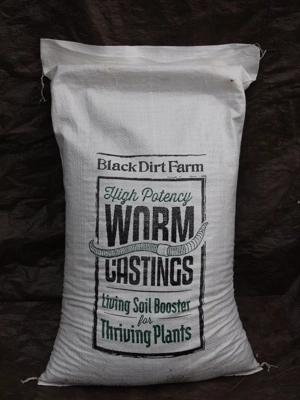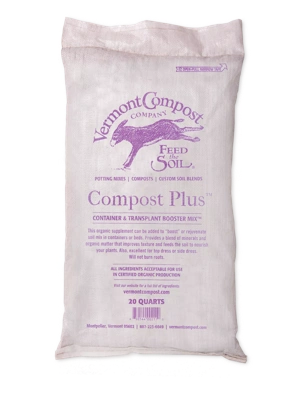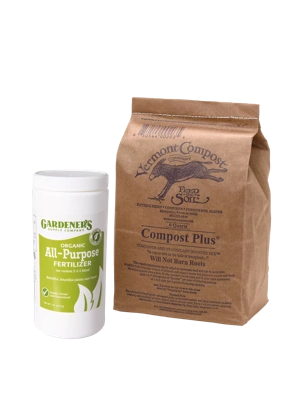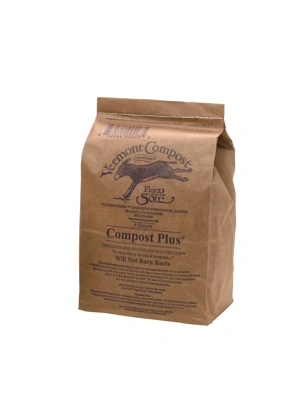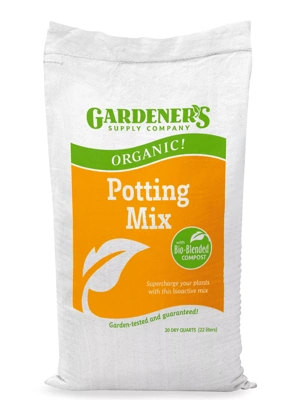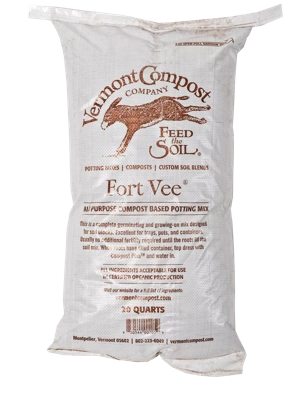More Articles
Find more garden information
Other Article Categories
Advice Soils & Compost How to Recharge Old Potting Soil
Give your potting soil a little TLC

Provided it's disease-free, freshen up this potting soil and reuse it in raised beds, planters, and other container gardens.
First, can I reuse potting soil?
Like many aspects of gardening — it depends.
If the potting soil has just been used one season and all the plants were completely healthy, sure. However, if you know your plants ended up hit withdowny mildew, orother plant disease, you'll want to either toss the soil or spend some time sterilizing it. Many fungi and viruses CAN overwinter in soil, making them especially hard to eradicate from year to year.
Sterilizing Potting Soil
Just a reminder — killing off the "bad" viruses will also kill off the "good" bacteria and microorganisms that are vital for soil and plant health. Soil sterilization can be done in the microwave or even in the oven, although this can make for an indoor mess.
Or favorite method? Using the sun, called solarization. Solarization leaves no chemical residue, is safe for organic crops, and is easy enough for home gardeners to complete.
- Remove all the contaminated stems, leaves, and roots from your potting soil. Place the contaminated potting soil in a black plastic trash bag.
- If your potting soil is completely dry, add a little bit of water; just enough to moisten the soil thoroughly.
- Seal the bag and place it in sunniest, brightest spot in your yard.
- Solarization is both time and temperature dependent — depending on your gardening climate, your soil may be sterilized anywhere in between 4 and 12 weeks. Most weed seeds are killed off at lower temperetures, however more heat is needed for plant diseases. Soil solarization is effective against fungal pathogens such as wilt, Fusarium, andPhytophthora root rot, and bacterial pathogens such potato scab.
How to Reuse Potting Soil
Ok, you've determined your old potting soil is disease-free. Now witha little TLC, you can repurpose that potting soil for another batch of beautiful hanging baskets, perfect patio planters, or ravishing raised beds.
1. Top It Off
If the level of soil in your raised bed has dropped and you plan to garden in the same space, mix in some additionalfresh potting mix to regain depth again. Ideally, the soil comes to within an inch or so of the rim of the planter or raised bed. Use a fork or hand tool to blend the new soil into the old soil.

Blend new soil into the old soil.

Gardener's Supply Organic All-Purpose Fertilizer and Container Booster Mix
2. Recharge Soil Nutrients
Potting soil WILL get depeleted of nurtients over time — it's important to put in to your soil what you expect to get out of your garden beds. Compost and an organic fertilizer will bring much-needed minerals and organic matter to your potting soil:
- A granular, organic fertilizer, likeGardener's Supply Organic Fertilizer, will slowly release nitrogen, potassium, and phosphorus into the soil over time.Use 1/4 cup per square foot.
- No compost readily available at home? No problem. Try a compost-based amendment like Vermont Compost Container Booster Compost Mix.Use 3 cups per square foot. This is the secret sauce! This potent, all-organic formula includes concentrated plant and manure compost, washed granite, black rock phosphate, and other natural ingredients.

Sprinkle fertilizer and either compost, or a compost-based amendment, on to the surface of your old potting soil. Then blend with a trowel or cultivator.
Now plant! Direct seed, or transplant flowers, herbs, or your favorite edibles. Not getting the results you had hoped for? Consider testing your soil for nutrient deficiencies or pH shifts with an easy-to-use soil test kit.

Recharging older potting soil with compost and granular fertilizer set future seedlings up for success.
Last updated: 09/14/2023
People who read this article often purchase
Get the Dirt
Stay up to date on new articles and advice. Please fill out the information below.
As an avid gardening expert with years of hands-on experience, I am well-versed in the intricacies of soil management and potting soil rejuvenation. My expertise is not merely theoretical; I have successfully revitalized old potting soil and transformed it into a thriving medium for various plants. Allow me to share my knowledge on the concepts mentioned in the article you provided.
1. Reusing Potting Soil: The article rightly emphasizes the condition of the potting soil. If it's disease-free and has only been used for one season with healthy plants, reusing it is a viable option. However, the presence of diseases like downy mildew necessitates careful consideration. Fungi and viruses can overwinter in soil, posing a risk to future plants. Sterilization methods, including microwave, oven, or solarization, are discussed. Solarization, utilizing the sun's heat, stands out as an effective and chemical-free technique.
2. Soil Sterilization: Soil sterilization is crucial when dealing with contaminated potting soil. The article provides insights into the process of removing contaminated plant material, placing the soil in a black plastic bag, moistening it, and exposing it to sunlight for a period ranging from 4 to 12 weeks. The method is tailored to eradicate various pathogens, including fungal and bacterial issues like wilt, Fusarium, Phytophthora root rot, and potato scab.
3. Reusing Potting Soil with TLC: Once the potting soil is confirmed to be disease-free, the article guides readers on how to rejuvenate it for further use. The suggested methods include topping off the soil in raised beds, ensuring it reaches the desired depth. Additionally, the importance of replenishing soil nutrients is highlighted, with an emphasis on using organic fertilizers and compost to provide essential minerals and organic matter.
4. Recharging Soil Nutrients: Potting soil naturally depletes nutrients over time. To counter this, the article recommends the use of organic fertilizers and compost. Gardener's Supply Organic Fertilizer is suggested for slow-release nitrogen, potassium, and phosphorus. If compost is not readily available, a compost-based amendment like Vermont Compost Container Booster Compost Mix is recommended. The article provides specific usage instructions, stressing the significance of these elements for successful plant growth.
5. Soil Testing: To ensure optimal results, the article suggests testing the soil for nutrient deficiencies or pH shifts using an easy-to-use soil test kit. This proactive approach allows gardeners to address specific issues and tailor their soil amendments accordingly.
In conclusion, the article offers a comprehensive guide on reusing and revitalizing potting soil, covering aspects of disease management, soil sterilization, nutrient replenishment, and the importance of testing for optimal plant health. Following these guidelines ensures that gardeners can maximize the longevity and productivity of their potting soil.



